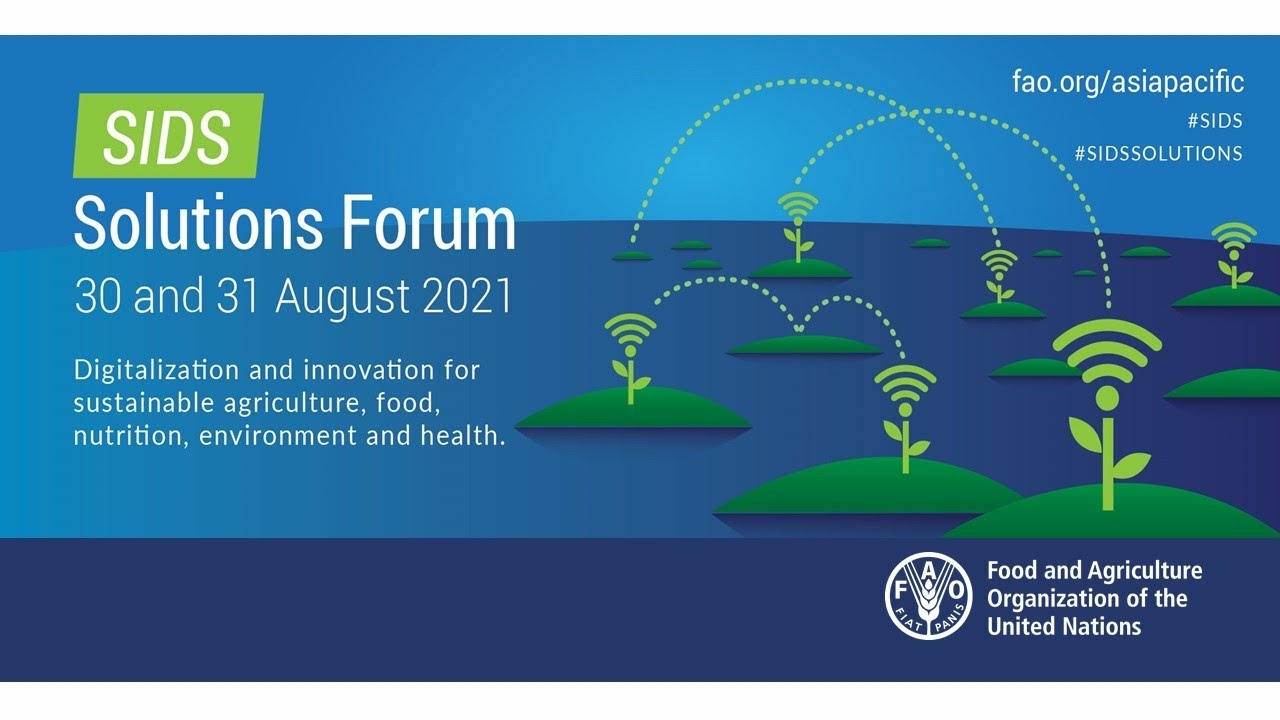(LISBON — June 30, 2022) A Multistakeholder Aquatic Blue Food Coalition was formally launched at the United Nations Ocean Conference this week, a major milestone towards realizing the full potential of blue foods to help end malnutrition and build a positive and equitable nature. and resilient food systems.
This launch comes after months of discussion catalyzed by the 2021 UN Food Systems Summit, which identified blue foods as a revolutionary solution to transforming food systems and meeting the 2030 Sustainable Development Goals, or SDGs. More than halfway through the International Year of Artisanal Fisheries and Aquaculture, the UN Ocean Conference served as a critical opportunity to combine food system and ocean goals.
The Coalition includes the European Union, Fiji, Germany, Iceland, Japan, New Zealand, Canada, Palau, Indonesia, Portugal and the United States of America, as well as representatives from intergovernmental organizations, NGOs, academic institutions, aquatic food producers and others along the value chain, consumer groups, financial institutions and philanthropies. Together, these members recognize that blue foods – fish, shellfish, aquatic plants and algae captured or cultivated in freshwater and marine ecosystems – play a central role in the food and nutrition security of billions of people. An estimated 800 million people also depend on blue food systems for their livelihoods.
Rather than strictly focusing on blue foods as just a natural resource, the Coalition agrees to bring a holistic approach to food systems decision-making. For example, these foods have a vital role to play in achieving several SDGs – in fighting hunger and malnutrition, reducing poverty and providing livelihoods, and reducing the food system’s impacts on climate change and biodiversity loss. .
Prime Minister Katrín Jakobsdóttir of Iceland celebrated the launch of the Aquatic Blue Food Coalition at a “Future of Food is Blue” side event at the UN Ocean Conference on Monday: “The ocean is not just crucial to tackling the climate crisis ; it is also a huge source of resources and food. It needs to be managed sustainably and responsibly and, most importantly, for the benefit of the many and not just the few. Iceland continues to be a proud supporter of the Aquatic Blue Food Coalition.”
The side event brought together 16 speakers and shared the Coalition’s vision to advance the understanding, acceptance and integration of sustainable blue foods into food systems and food value chain thinking and decision-making. Furthermore, according to its statement, the Coalition committed to 1) “raise the profile of aquatic foods in discussions on the future of food systems, including future international forums… and in the formulation of national policies”; and 2) “mobilize support – including investment, technical capacity and partnerships – for countries, or groups of countries, that are preparing to integrate these foods into their food systems and implement basic aquatic/blue food priorities”.
“Small Pacific islands are eager to work with science, technology, industry and other partners to develop highly sustainable blue food models across the Pacific,” said Dr. Satyendra Prasad, Fiji’s ambassador to the United Nations. In the opening plenary of the conference, Fiji Prime Minister Frank Bainimarama, Chairman of the Pacific Islands Forum, announced a commitment that, “By 2030, [Fiji] will produce more than 160,000 metric tons of cultivated and harvested ocean products.” sustainably, supporting more than 53,000 new jobs on their way to providing half of all blue food from sustainable fisheries by 2035.”
“It’s not just about one specific part of the world – it’s about food security for the whole world. The United States is very determined to be part of the solution, which is why I’m pleased to announce that we’ve endorsed this [Aquatic ] Blue Foods Coalition,” said Monica Medina, US Assistant Secretary of State for Oceans and International Scientific and Environmental Affairs of the United States.
Jochen Flasbarth, Secretary of State at the German Federal Ministry for Economic Cooperation and Development, shared how the Coalition will build on the momentum of the 2021 UN Food Systems Summit and the 2022 UN Ocean Conference to mobilize change: “Last year, United Nations Food Systems Summit underlined the importance of looking at terrestrial and aquatic food production together in a coherent way. I am pleased to inform you that Germany has decided to join and support the Aquatic Blue Food Coalition. We see this Coalition as a unique opportunity to champion blue and aquatic foods, which can play an important role in healthy diets and food security.”
Current members of the Aquatic Blue Food Coalition are: European Union; Fiji; Germany; Iceland; Japan; New Zealand; Palau; USA; Canada; Portugal; Indonesia; The Pacific Community; WorldFish One CGIAR; Stanford Center for Ocean Solutions, Johns Hopkins Center for a habitable Future; Environmental Defense Fund; WWF; Friends of Ocean Action; Crude; Ocean; Monterey Bay Aquarium; Regional Cluster “Northeast” – Bulgaria; Conservation International, RiseUp; Lloyd’s Register Foundation; Care International, Wildlife Conservation Society; Safe Algae Coalition; Global Salmon Initiative; Blue Food Partnership, UN Global Compact
One of the world’s leading international not-for-profit organizations, the Environmental Defense Fund (edf.org) creates transformative solutions to the most serious environmental problems. To this end, EDF links science, economics, law and innovative private sector partnerships. With more than 3 million members and offices in the United States, China, Mexico, Indonesia and the European Union, EDF scientists, economists, lawyers and policy experts are working in 28 countries to turn our solutions into action. Connect with us on Twitter @EnvDefenseFund
What is the name given to India’s first manned ocean mission?
India’s first manned ocean-going mission, Samudrayan, was launched in Chennai on Friday by Union Minister of State Dr. Read also : Are you traveling to Germany? Here’s what Americans need to know.. Jitandra Singh.
WHO launched the Samudrayaan project? Under the Deep Ocean Mission launched by the Government of India, a manned scientific submersible was proposed to be developed for deep ocean exploration. The project is named as Samudrayaan.
What is the name of India’s first manned ocean mission?
Singh launched the Samudrayan Mission in Chennai on October 29 this year, which is said to be India’s first manned ocean-going mission and will help India join a handful of countries like China, Russia, Japan, France and the US, which have submersible vehicles that allow them to carry out underwater activities.
What is Samudrayaan mission?
This is the prototype of the human quarters of the Matsya 6000, India’s human submersible, which hopes to take three aquanauts to the bottom of the Indian Ocean, some 6,000 m below sea level. Read also : Giving people cash is usually better than sending them food. Work on Mission Samudrayaan, the country’s daring manned deep-sea voyage – planned to launch in 2024 – is in full swing.
What is India’s deep ocean mission?
Recently, the Ministry of Earth Sciences launched the Deep Ocean Mission (DOM). DOM is a mission mode project to support the Blue Economy Initiatives of the Government of India. This may interest you : A food packaging system reduces health risks and saves food.
What is one ocean summit?
In order to mobilize the international community and act collectively for a more sustainable ocean, the President of the French Republic decided to organize a One Planet Summit dedicated to the ocean, scheduled in Brest, from 9 to 11 February 2022, for the protection of the oceans.
What is the theme of One Ocean Summit? About the One Ocean Summit “Our oceans, our future: partnership for the implementation of Sustainable Development Goal (SDG) 14” was the theme of the conference. The governments of Sweden and Fiji hosted the meeting. The 2022 summit took place during the French presidency of the Council of the European Union.
Which country is organizing the One ocean Summit?
One Ocean Summit: UNESCO asks countries to include ocean education in school curricula by 2025. its 193 Member States by 2025.
Why is the ocean so important?
The air we breathe: The ocean produces more than half of the world’s oxygen and absorbs 50 times more carbon dioxide than our atmosphere. Climate regulation: Covering 70% of the Earth’s surface, the ocean transports heat from the equator to the poles, regulating our climate and weather patterns.
What is the UN doing about ocean pollution?
UN Environment noted that the Clean Seas Campaign – one of the first voluntary commitments announced for the Ocean Conference – generated thousands of pledges from NGOs and individuals to tackle pollution, along with nearly 40 national pledges, leading many countries to ban plastic. as concrete material. step to fight…
What is UN Marine Pollution? direct or indirect introduction by humans of substances or energy into the marine environment (including estuaries), resulting in damage to living resources, risks to human health, obstacles to marine activities including fishing, decreased quality of seawater and reduction of amenities.
What are organizations doing to stop ocean pollution?
The Ocean Conservancy Ocean Conservancy is another leading advocacy group working to protect special marine habitats, restore sustainable fisheries and reduce human impact on ocean ecosystems.
What is the UN doing about plastic waste?
Heads of state, environment ministers and other representatives from 175 nations endorsed a landmark resolution at the UN Environment Assembly in Nairobi on Wednesday to end plastic pollution and forge a legally binding international agreement by the end of 2024. .
Who is trying to stop ocean pollution?
1. Ocean Conservation. Founded in 1972, Ocean Conservancy is a leading law group based in Washington, D.C. that works for the protection of special marine habitats, the restoration of sustainable fisheries and, most importantly, to reduce the human impact on ocean ecosystems.






